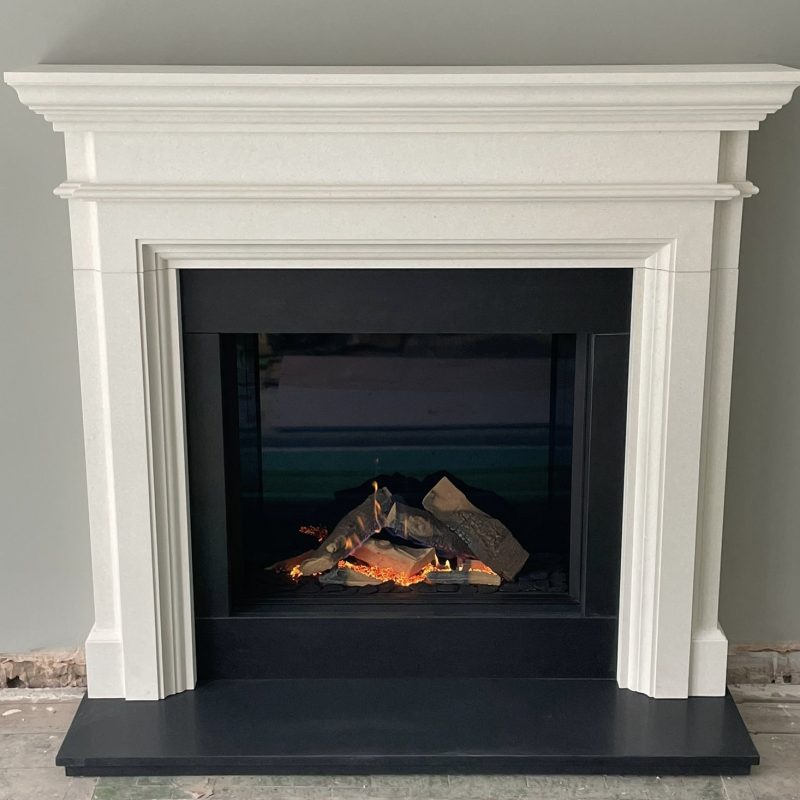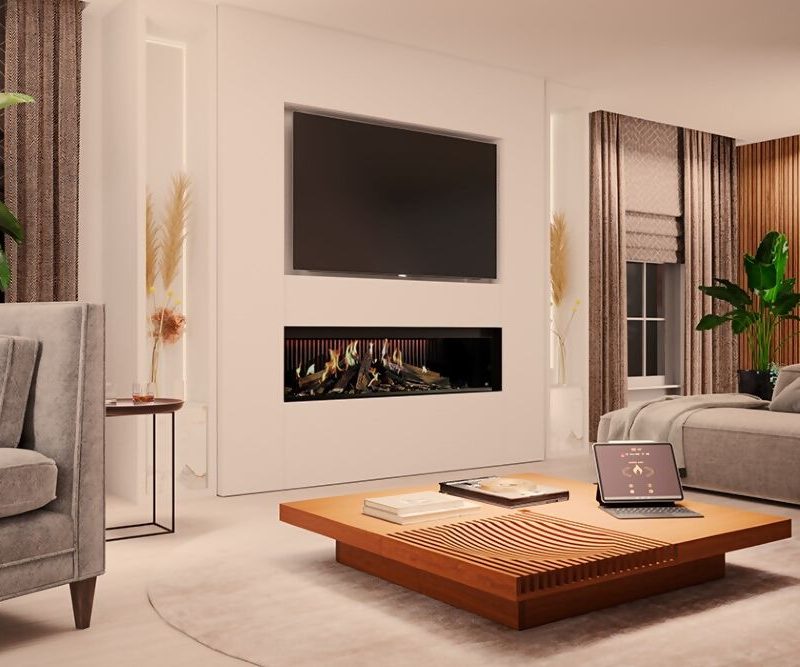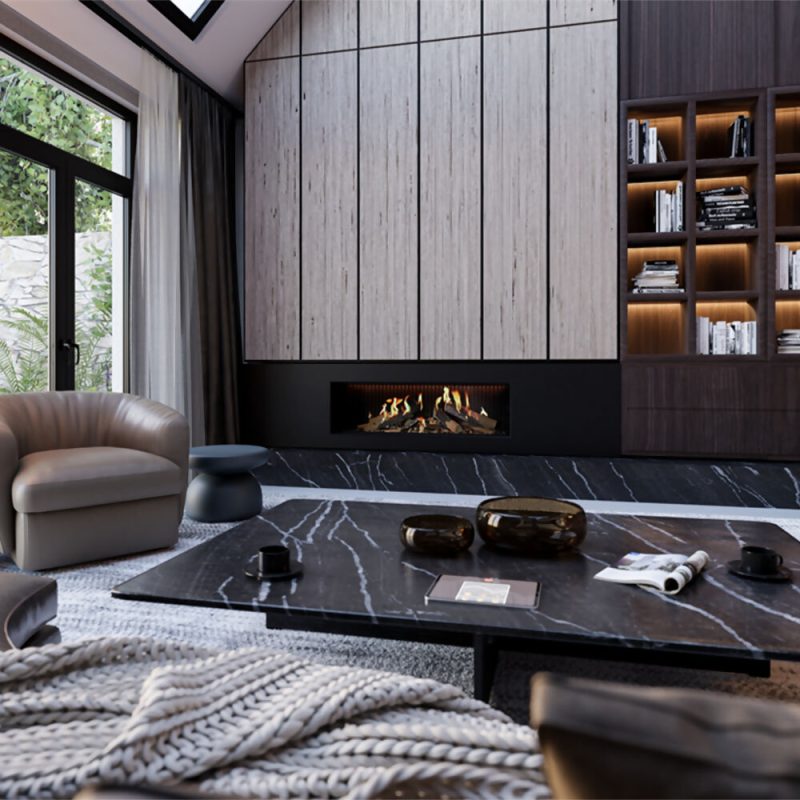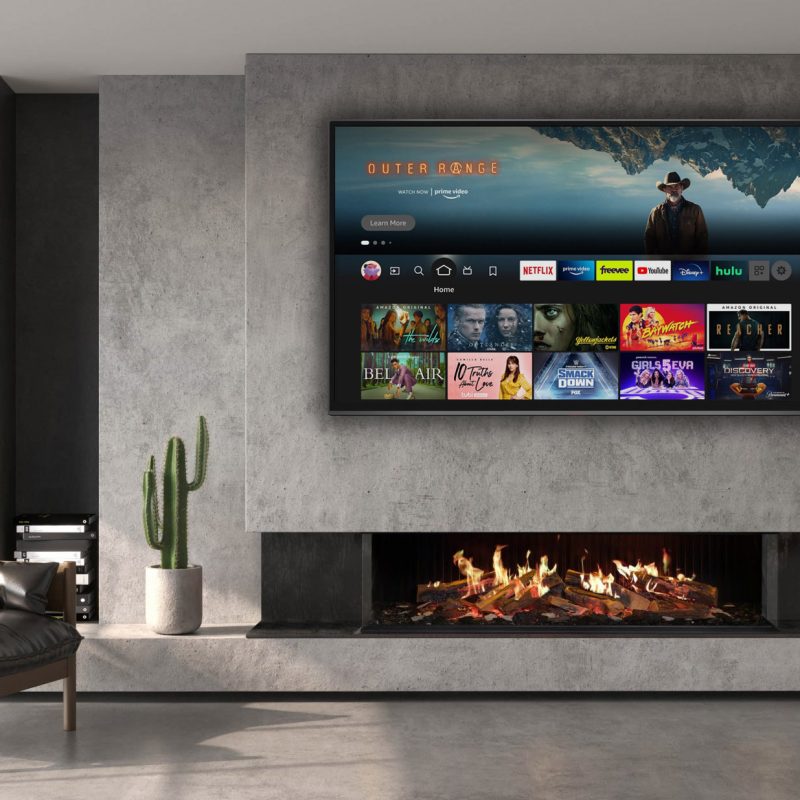Shopping for a fireplace requires more preparation than other kinds of purchases. There are many factors that homeowners need to be aware of. For example, do you live in a smoke-controlled area? Are you looking for a fire that requires minimal intervention?
You’ll need to think about your home’s current configuration: do you have the correct fireplace architecture, or will you need to allocate a budget for installation costs? These are the kinds of questions you should have the answer to, even before you start shopping.
Luckily, the Fireplace Warehouse is here to help! Our guide to the main types of fireplaces will cover wood-burning stoves, gas fires and electric appliances. We’ll learn what their main draws are and what to consider, including some interesting subtypes to keep in mind.
(Ready to see these fires in person? Head to the North West’s biggest showroom! We’ve got 6,000 square feet of live displays from industry-leaders like Stovax, DRU and Elgin & Hall)
Wood-burning fireplaces
Wood-burning stoves are considered by many to be the most ‘authentic’ types of fireplace. Modern models are sealed steel or cast-iron boxes that control how air meets fuel. These devices allow gases to burn rather than escaping up the chimney.
Primary air feeds the base of the fire, while secondary air re-ignites the smoky gases for a cleaner, hotter burn. It’s efficiency where we see a sharp turn from older, open-hearth appliances.
Ecodesign-compliant stoves in the UK must achieve at least 75% net efficiency, compared with around 40% for an open fire under the same metric, and typical open fireplaces typically sit at around 15–20% (one government survey put them at 17%).

The high efficiency of modern wood burners means that more of the energy in each log ends up in your room rather than vanishing up the flue, so you buy (or process) less fuel for the same comfort level.
Inserts and sealed stoves also cut draughts compared to open chimneys, which can make older houses feel less chilly between burns.
For homes concerned about power outages, you can keep properly seasoned wood as a backup heat source that doesn’t depend on the grid.
To own a wood-burning fire, you must play by the rules.
In smoke control areas, appliances need to meet strict emission limits (no more than 3g of smoke per hour), and using the wrong fuel or letting smoke billow from your chimney can bring penalties of £175–£300 (it can even rise to £1,000 for buying unauthorised fuel).
Building Regulations Part J also requires homeowners to have the correct flues and a carbon monoxide alarm, so your wood-burning fire must be installed by a professional.
There are other factors potential buyers must consider, such as having room for log storage and sweeping regularly, as well as sourcing “Ready to Burn” certified fuel. These aren’t ‘drawbacks’, but the responsibilities you take on.
With wood-burning stoves, buyers aren’t limited to one design. Freestanding stoves are undoubtedly one of the most popular varieties, as they radiate heat on all sides and serve as a great focal point for a lounge.
Inset or cassette fireplaces slot into an old fireplace opening or a purpose-built wall for a flush look. Smaller wood-burning fires can act as supplemental heating, and larger ones (with heat outputs ranging from 9–14kW) can suit primary heating roles.
Gas fireplaces
Gas fireplaces use natural gas or LPG to produce a controlled flame, usually set behind a glass panel or in an open-fronted design. The gas is usually burnt over decorative ceramic logs, coals, or pebbles, with heat delivered via radiant energy and convection.
These fires can be installed into a wall, inset into a more ‘traditional’ fireplace opening, or mounted as freestanding stoves. Most models connect to a chimney or flue, but if this isn’t feasible, balanced-flue models can be installed in homes without them.
Similar to wood-burning stoves, gas models are one of the most improved types of fireplaces in terms of efficiency. Glass-fronted, high-efficiency models often achieve ratings of 85% or higher, with some even topping 90%.
Upgrade from an older gas fire to one of these newer models, and you’re likely to see an instant decrease in running costs.

Do you prefer straightforward operation? Gas fireplaces mean you can enjoy real flames at the push of a button. Many models offer remote and all have thermostat controls, so you can adjust intensity based on the season.
Glass-fronted and balanced-flue types are especially good at heating a room quickly and keeping it warm. Plus, since there’s no need to store wood or clean out ash, they’re low-maintenance compared to solid fuel options.
They are also exempt from UK smoke control regulations, so may be the preferred option for homeowners living in towns and cities where wood-burning is restricted (e.g., Newcastle-upon-Tyne, Reading, Oxford, Bristol).
Once installed by a Gas-Safe registered engineer, they’re very dependable for long-term use.
While gas fires might be simple to operate, they’re not maintenance-free. You’ll need to arrange servicing annually to guarantee safe operation. Gas fires can also sit on the more expensive end of the installation spectrum, particularly if your property needs a new flue or gas connection.
Open-fronted designs may lose more heat and require extra ventilation to comply with UK building regulations, although newer glass-fronted models address this issue.
Gas fires can be organised into subtypes depending on their purpose.
High-output fires and stoves are designed to act as the primary heat source for rooms, and these can include balanced-flue fires, inset glass-fronted high-efficiency models, and outset radiant designs that project heat directly into a room.
However, if you’re looking for something more decorative, some retailers (like us!) stock decorative or lower-output gas fires intended more for their visual appeal. These are often open-fronted models.
Electric fireplaces
For those who prefer the fuss-free types of fireplaces, electric models plug into a standard socket and use electric heating coils, ceramic PTC elements or infrared panels to generate heat.
Often, a fan is used to circulate warm air into the room as ‘flame’ visuals (created by LEDs, water vapour effects or rotating metallic spindles) play in the background.
They don’t need a chimney or flue for operation, so they’re the number one choice for homes without traditional fireplace infrastructure.
Electric fireplaces are also rated 100% efficient at the point of use, as all the energy they consume is used for heat or effect (plus, they experience no losses through vents or exhaust).

We’ve already covered a lot of them, but one of the main draws of electric fireplaces for homeowners is their ease of use. Plug-in models can be enjoyed with a switch or remote control, with some even offering app-based operation.
They need little upkeep compared to our other options, as there’s no need for chimney sweeping or gas servicing. Plus, since no combustion occurs, indoor air quality isn’t compromised, and there are no emissions to manage!
Even better, all models include a flame-only setting, which means you can enjoy the visual effects without heat during milder summer evenings.
The cost of electricity means these models can be comparable to gas fires when the heating element is in use, especially during extended operation. They aren’t as powerful as central heating systems, so they work best in single rooms or as a supplementary source of warmth.
For some, the flame visuals may seem less convincing than a gas or wood fire, but recent technologies have seen this realism improve tenfold. Overall, electric fires are among the safest, hassle-free choices on the market today.
There are many types of fireplaces that operate electrically, perhaps offering homeowners the broadest range of design choices. Some are designed to act as primary space heaters (compact wall-mounted or inset styles), others prioritise visual effect over heating power.
Hole-in-the-wall electric fires with low heat output are particularly popular for use within media walls or in upper-floor flats, as they provide subtle warmth that won’t damage electronics or overwhelm a smaller space.
Installation
Where your new fire is going to be set up is one of the most important factors of installation.
Electric models are usually the most straightforward – they may just need a standard socket and wall space, so there’s often no need for specialist fitting or extra structural work.
On the other end of the spectrum, wood-burning stoves and gas fires typically require professional installation.
Gas appliances must, legally, be fitted by a Gas Safe registered engineer, and wood stoves by a HETAS-certified installer, particularly if a chimney liner, new flue or proper hearth construction is involved.
Installation costs can vary massively, particularly if building works are required, so you’ll need to factor this into your budget.
However, when purchasing from us, we have our own Gas-Safe and HETAS fitters, and we also have a Media wall installer, so we can make sure that before the goods are installed in your home, they will be suitable for you.
We just ask for a 30% refundable deposit, and one of our talented installers will come out and visit your property to make sure the fire you want will be suitable for your home.

Maintenance
The amount of effort required for different types of fireplaces depends entirely on how they operate. Electric fires are low-fuss: they don’t burn fuel, so there’s no ash to clear or chimney to sweep.
Every few years, you may need to replace a bulb or clean the unit’s interior, but otherwise, they’re set-and-forget.
Gas fires are slightly more demanding. They should be serviced annually to ensure everything operates safely, including checking the burner, pilot light, and ventilation. Wood-burning stoves need the most upkeep.
You’ll need to regularly remove ash, clean the stove glass, and have the chimney swept at least once a year to avoid creosote build-up.
Efficiency
Electric fires are 100% efficient; however, the higher cost of electricity in the UK means they’re not always the cheapest to run long-term.
Gas fires vary widely, but glass-fronted or balanced-flue models achieve 75–90% efficiency, which could make them equally strong contenders.
Wood-burning stoves must now meet Ecodesign regulations, and top-rated models can achieve an efficiency of 80–85% if used properly and fed with kiln-dried logs.
Essentially, all modern fireplaces have great efficiency ratings, so it’s a matter of offsetting this with the factors outlined above.
Come and visit the biggest showroom in the North West!
Ultimately, choosing the right fireplace is all about seeing how it looks, feeling the warmth for yourself, and getting honest advice from people who know what works.
At The Fireplace Warehouse, we’ve got one of the largest live display showrooms in the North West! You can explore gas, electric and wood-burning options side by side, with a member of our team always on hand to provide advice.
Find the perfect fit by heading to the following address:
Unit 34, Hartley Retail Estate,
Hartley Avenue (off Long Lane),
Aintree, Liverpool,
L9 7DB, UK
We’re excited to see you!